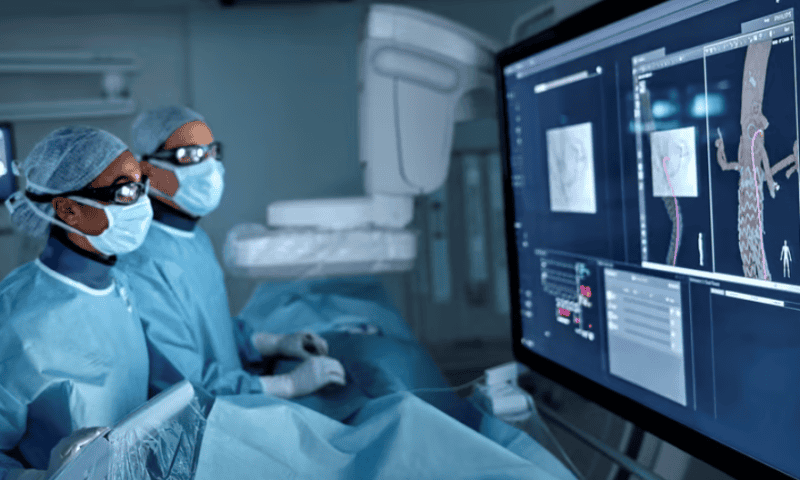Philips is taking another step closer to radiation-free surgery, with a new fiber-optic-powered system designed to help clinicians navigate through the body’s blood vessels.
The company announced that its latest LumiGuide system has helped to guide minimally invasive procedures during an initial rollout that began late last year, with a first focus on complex operations to repair aortic aneurysms.
Typically, this kind of endovascular procedure relies on real-time, 2D X-ray images to help steer guidewires and catheters up into the abdomen through the large blood vessels in the leg. Instead, LumiGuide aims to provide 3D, color images from inside the patient’s body, using optical fibers built into the guidewire itself.
“In effect, LumiGuide is a 3D human GPS powered by light,” Atul Gupta, Philips’ chief medical officer for image guided therapy and precision diagnosis, said in a statement.
Philips said LumiGuide, which is compatible with off-the-shelf catheters, represents the second generation to use its fiber optic technology. The addition of artificial intelligence programming allows the system to scan the area inside the blood vessel and generate a computer model that a surgeon can then rotate to view from any direction.
According to the company, LumiGuide has been used in more than 900 patients during its limited release in nine international aortic centers. Compared to previous surgeries, the approach has led to a 56% reduction in radiation exposure, as well as a 37% decrease in total procedure times.
Going forward, Philips said it plans to gather more clinical data on LumiGuide’s performance ahead of making it available on a wider scale and tackling surgeries beyond aortic procedures.

